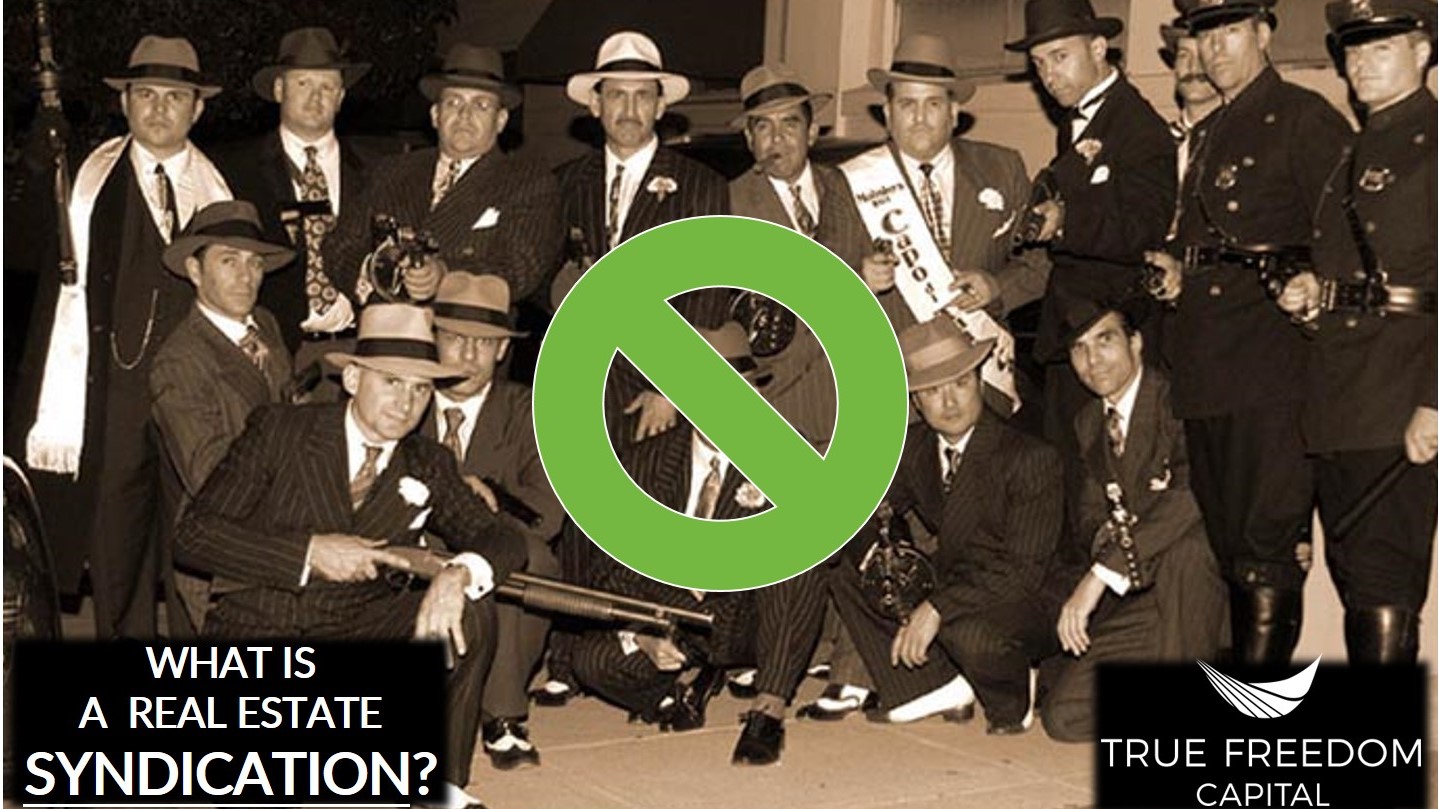
By Joe Firmin 4-minute read
Short answer: A Real Estate Syndication is a way for investors to pool their money together to purchase real estate assets that are too large for any one investor to purchase (or manage) on their own. In the past only uber wealthy and connected individuals had access to these types of investments. While syndications have been around for a long time, the passing of the JOBS Act in 2012 opened the gates to others and advertisement under certain conditions.
You may be thinking… “I don’t know. Syndication… sounds sinister…” Yep, I thought so too. Typically, syndication is something you’ve only heard about in conjunction with organized crime. Real estate syndications are organized too… to do a lot of good! Let’s get down to it.
The Gist
Typical syndications are specific opportunities or deals that are presented to an investor to participate in. Opportunities could be the purchases of a 100-units of apartments at “123 Main St. Apartments,” a self-storage facility or a mobile home park, etc. The needed capital to purchase and fund these opportunities could be $300K or $300M, the common thread being they need to pool money from multiple individuals to make the project work.
The Parties & Structure of a Syndication
The Sponsors, also known as the General Partners, bring the opportunity. Their role consists of: raising the capital, managing the purchase, procuring the financing, due diligence, managing the asset, landlord responsibilities, investor relations and communications, distribution of cash flow, etc. Pretty much anything having to do with buying the real estate, managing the day-to-day operations of the property and working with the investors.
The Investors, also known as the Limited Partners, participate passively in the opportunity. Their role consists of providing their capital to the Sponsors and in return receiving mailbox money and periodic transparent communications about the performance of the property.
An LLC is setup with an operating agreement that spells out the rights and responsibilities of each party, including the distributions, fees, voting rights, etc. This is important as it protects the parties if the deal does not work out as planned.
$$$ - How the Money Works
Based upon the predetermined outlined equity splits and fees in the LLC operating agreement, the Sponsors will distribute the net proceeds of the property on a monthly or quarterly basis according to the predetermined terms. You may be asking, “How is the Sponsor compensated for all the work they are doing?”
In most cases, Sponsors receive compensation in 4 buckets to ensure incentives are aligned with investors: Acquisition, Asset Management, Capital Transaction and Equity. The Sponsor is paid a fee once the property closes and is now the ownership of the newly formed LLC between the general and limited partners. This acquisition fee is usually 1-3% of the purchase price, depending on the size of the deal. The general partners are involved on a weekly basis in the ongoing daily management of the property and ensuring its performance. This work, known as ‘asset management’ is usually compensated at 2-5% of the cash flow available for distribution after all operating expenses and debt obligations (mortgage) have been paid.
The property will likely be refinanced or sold at some point during the ownership and the Sponsor work to set up this capital transaction is compensated at 1% of the refinance or sale price. The last piece of compensation is equity in the property. The equity split between the investors and sponsors, the asset management fee and the capital transaction fee all vary by deal and no two deals are the same so it’s very important to understand the specifics of the opportunity.
Before a Sponsor shares in the profits via equity for their work as manager and promoter, investors receive what is called a “preferred return.” The preferred return is a payment distributed to all investors that is usually about 5-8% annually of the initial money invested. If an investor brings $50K to invest, and the preferred return is 5%, then they should expect an annual preferred return of $2,500. If the property performance is such that a preferred return is unlikely in the distribution period, the return is cumulative. At times a business plan may be in process and the return is not realized in year 1 of the property ownership, the preferred return distribution would roll to the next period.
Can You Show Me? Sure, Here’s An Example Syndication:
Syndications are structured in such a way that the incentives are aligned for the Sponsors and Investors.
If you invest $50K into a real estate syndication with a 5% preferred return, you could get mailbox money of $2,500/yr if the property performs at a level to make the payouts possible.
If the equity profit split structure is 70/30 — investors net 70% of the profits after receiving their preferred returns and the sponsors net 30% only after the preferred return is met for the investors. If after the preferred return is paid out, and there is still $100K remaining, it will be split $70K to investors and $30K to the sponsors.
I hope this makes sense and you’ve learned a bit more about what a Real Estate Syndication is and how they basically operate. If you have any questions don’t hesitate to ask or drop a comment below!
If you would like to learn more about passive real estate investing with True Freedom Capital please click HERE.
